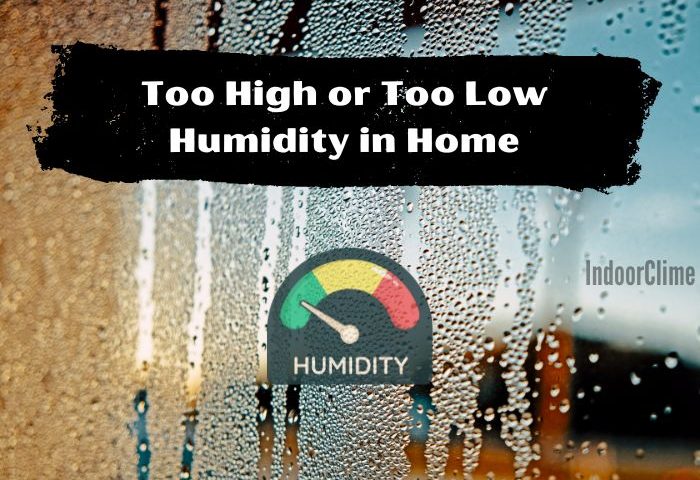Being a new parent comes with its own set of challenges. From understanding the baby’s needs to knowing the best nutrition, it is challenging.
As a new parent, one keeps the house clean, the corners away, and the doors sealed properly to avoid unwanted emergencies. But, often, one tends to ignore the internal atmosphere of the kid.
Our bodies can quickly adapt to changing environments as adults, but it is not easy for these newborns. They depend entirely on their parents’ intelligence to feel safe and warm.
The internal and external environment is vital to the baby’s overall growth. Too dry or cold air can have varied effects on the baby.
How Does Humidity Affect Babies?
As surprising as it may sound, humidity does affect a baby’s comfort. As adults, we may not realize its effect as our body has gotten used to it. Even if we feel uncomfortable, we can live with it, but comfort is everything for a baby to stay healthy.
Too much cold or warmth can lead to infections or unnecessary illness. Doctors say that a baby’s room or nursery should be at an optimum temperature that feels comfortable even to the parents.
If there is a slight discomfort to the parents, it will cause discomfort to the babies. Along with temperature, humidity also plays a key role. Even if the temperature is comfortable, too much humidity can make the room hot, and too little humidity can make it colder.
Not to mention the drop in the indoor air quality that humidity can cause. If your baby often has an irritated throat or sinus, then dry air can be the reason behind it. Skin can also get severely affected by dry air.
Chapped lips and red and cracked cheeks are caused due to low levels of moisture in the air. Higher humidity can cause the growth of allergens in the room, creating various health problems.

The Best Humidity Level for Babies
It is not too difficult to keep the environment healthy for your baby. For example, 40-60% relative humidity in the baby’s room is the best setting recommended by doctors.
Anything below 40% will cause viruses, irritation on the skin and nose, and a free flow of dust particles in the air.
A humidity level above 60% will cause various allergens in the atmosphere. Hence, humid levels within this range can keep many health problems at bay.
These levels are not limited to the baby’s nursery; you can maintain them throughout the house. This will also ensure that the room or house always maintains the desired temperature, guaranteeing comfort.
Observing a few things allows you to check if the baby feels hot or cold. For example, if you find the baby’s face red or sweaty palms, the baby feels too hot. Likewise, checking their chest can tell you if they are cold. A cold chest is an absolute no for a baby.
How To Regulate Humidity?

Once the humidity levels are achieved, it is important to maintain them for better comfort. The moisture levels in the air fluctuate depending on the season. Hence, the tricks to regulate humidity will differ depending on the season.
We need to increase the humidity levels when the air is dry during winter. Hence, using a humidifier can benefit.
There are simply plug-in humidifiers that can work great for a nursery. However, if the room is big or you need to maintain moisture throughout the house, you might need to consider a humidifier for the whole home.
During summers, however, the moisture climbs up quickly. Hence, it would help if you had a dehumidifier to reduce the humidity in the room.
Just like humidifiers, there are dehumidifiers available in the market. In addition, you can use a small plug-in dehumidifier or whole-home dehumidifier that can pull out the moisture from the area.
How Do You Monitor Humidity Levels In Your Nursery?

Temperature can be easily sensed, but humidity can’t. Therefore, to check the humidity levels of a room, one needs to invest in a hygrometer device.
It is a simple device that measures the moisture in the room and can assist in the right solutions to keep the room comfortable for the baby.
Various kinds of hygrometers are available in the market, from electrical to digital to mechanical. They measure the humidity by sensing the pressure and temperature changes in the environment.
FAQ
Does Dry Air Affect Your Baby’s Health?
The simple answer is yes. Dry air has a direct impact on the breathing pattern of the baby.
Too dry air can cause irritations in the baby’s throat that can initially go undetected but lead to long-term damage.
Should You Have a Humidifier in Your Baby’s Room?
If you live in a place that is too cold, where the moisture levels drop significantly, investing in a good humidifier can help you in many ways.
The air becomes too dry during winter and can cause trouble breathing properly.
It can dry out the throat and nose, which can irritate them. A humidifier adds moisture to the air, helping the baby breathe normally, especially while sleeping.
One must also use humidifiers only when necessary.
What is too humid for a baby?
Anything that is too humid for a parent is too humid for a baby. The recommended humidity level is 50-60; anything above 60% will become too humid.
This means there is a lot of moisture in the air, which can cause allergens to grow in the environment.
Final Word
While parents invest a lot in buying the best clothes, toys, and baby gear, parents also need to understand the importance of a healthy indoor environment.
If the baby is comfortable, he will sleep well throughout the night, giving the required rest to the parents.
An ideal humidity level can be achieved using a combination of devices, including hygrometers, humidifiers, and dehumidifiers.
However, an ideal humidity level does not guarantee a good night’s sleep unless the baby is dressed appropriately.
Use light clothing and lighter blankets to let the baby sleep comfortably while maintaining the ideal temperature and humidity levels.





